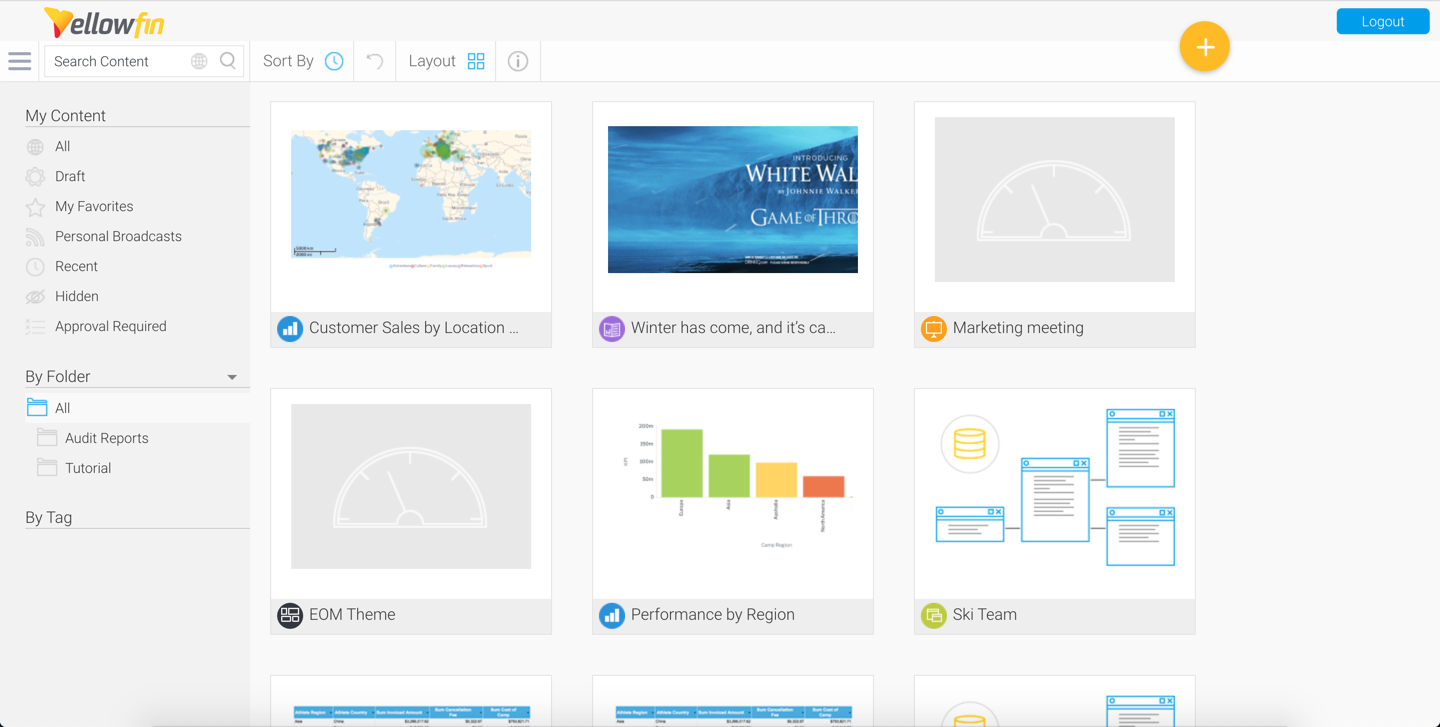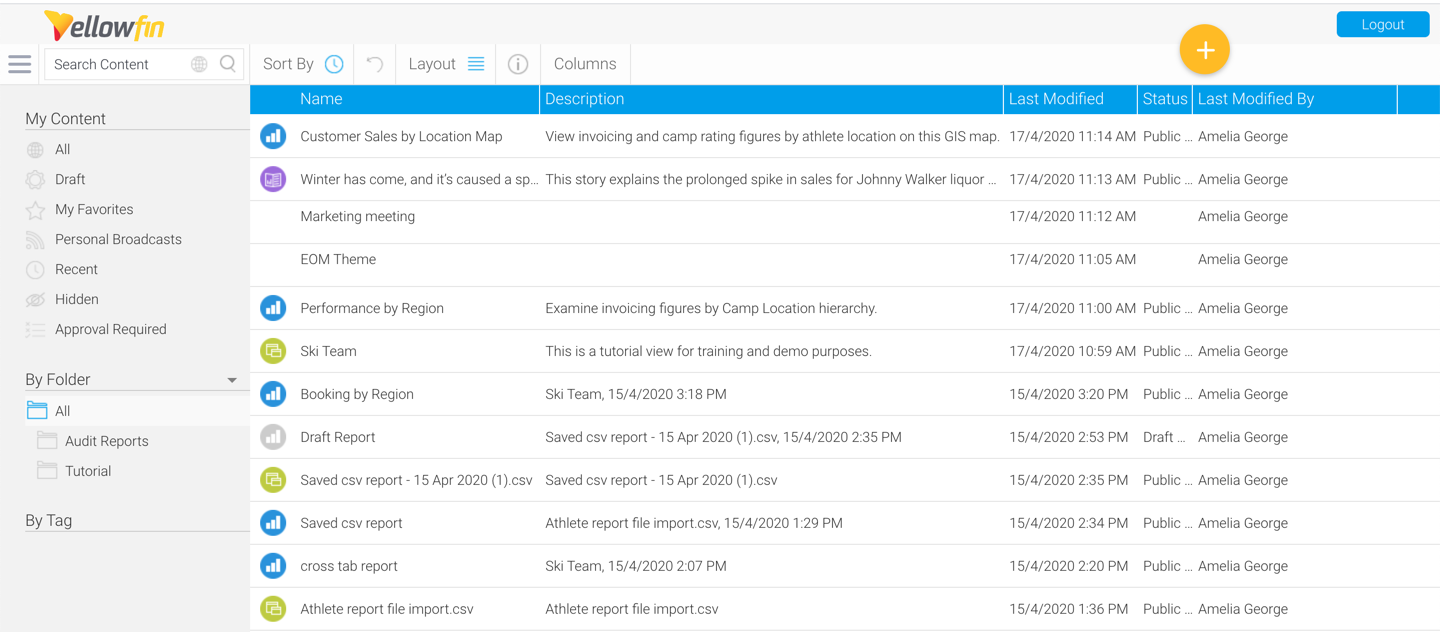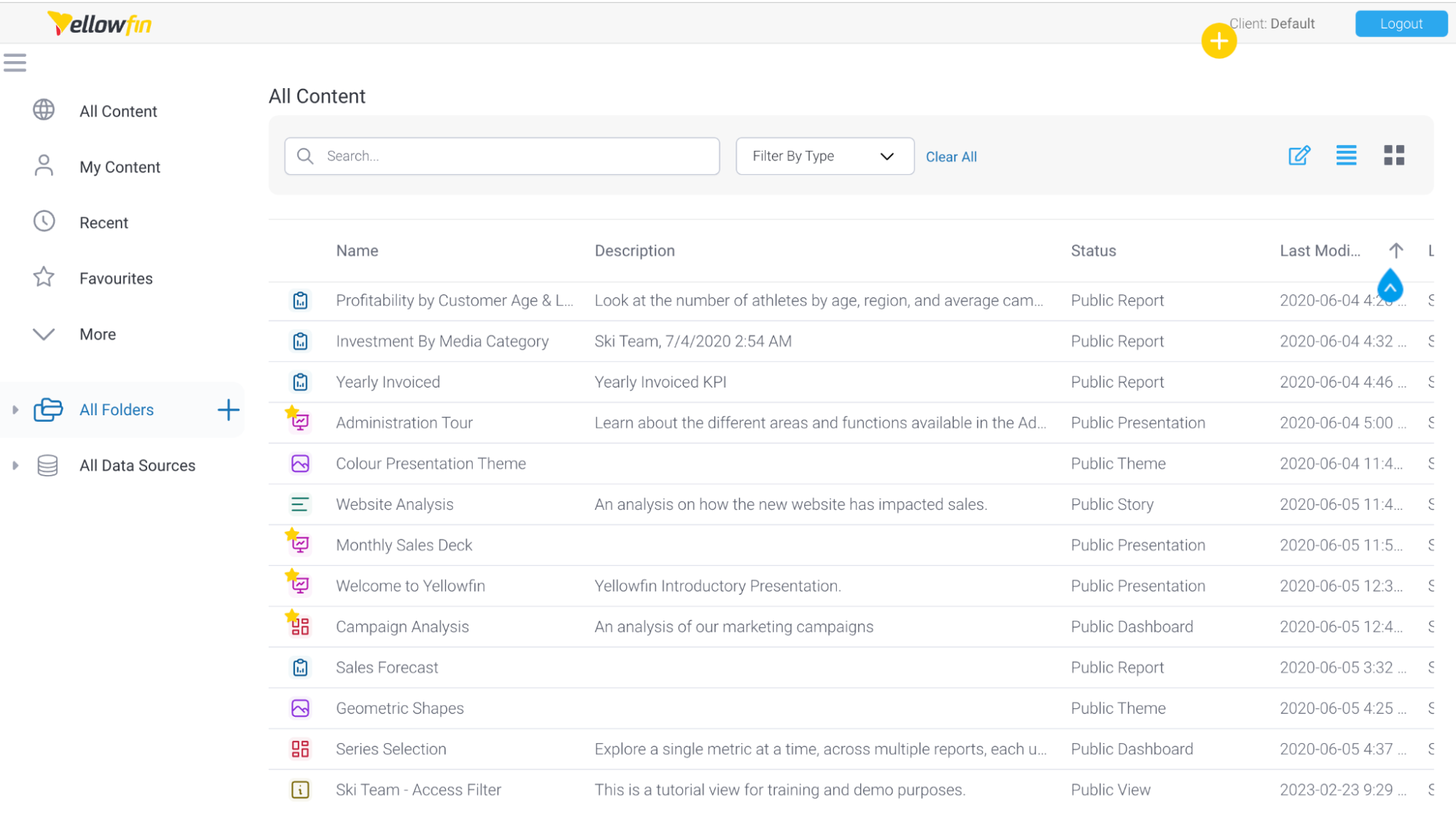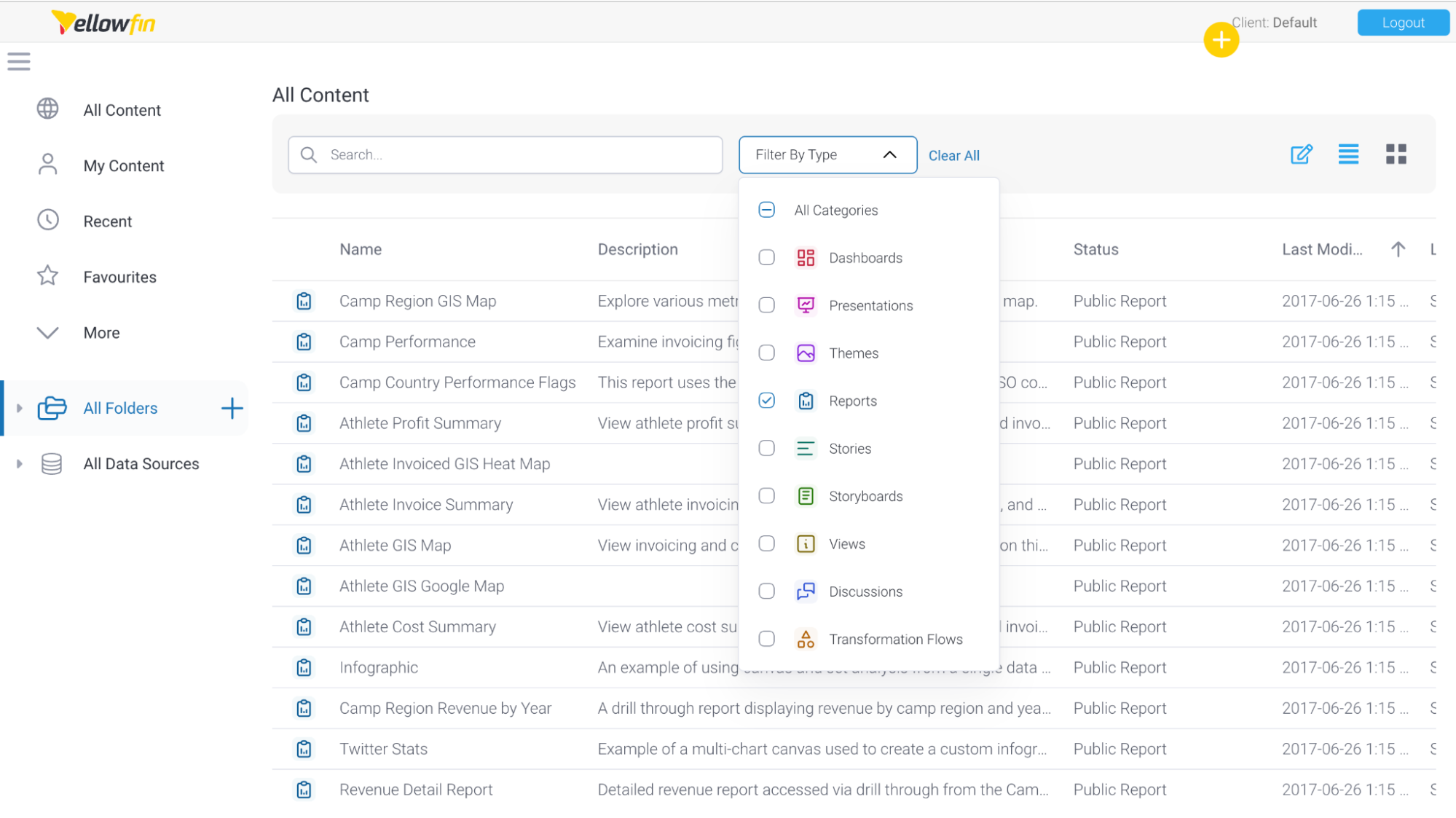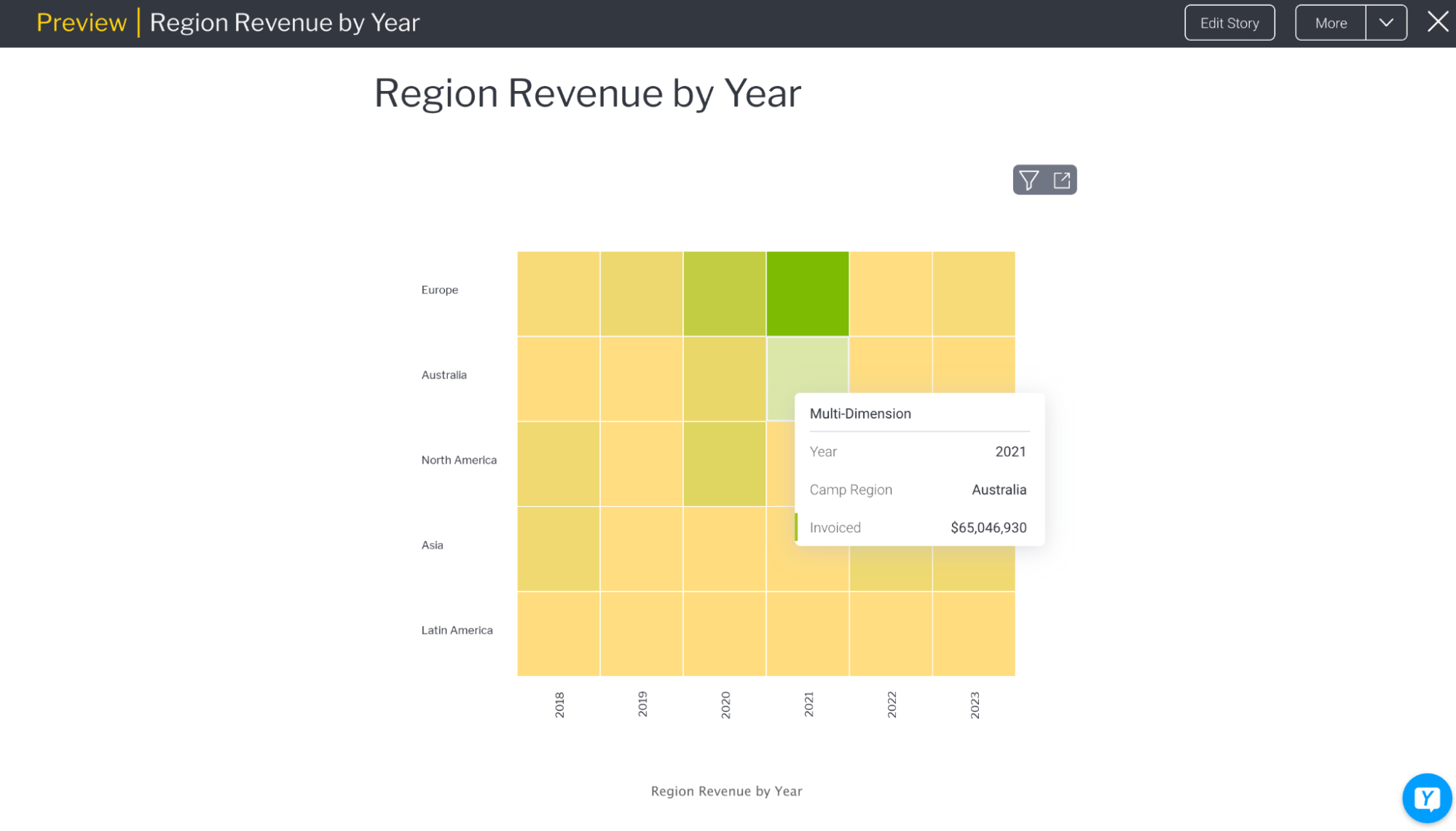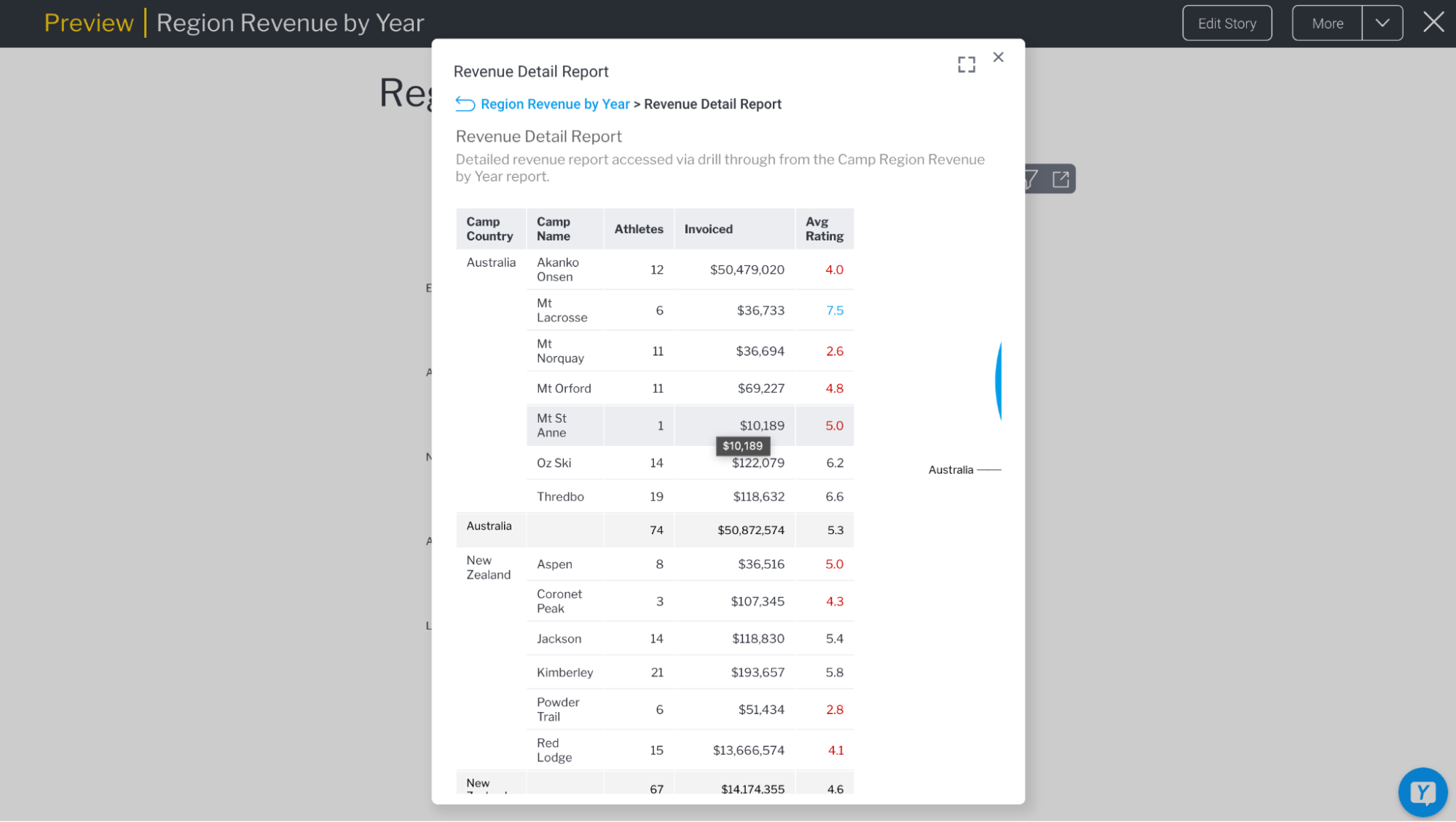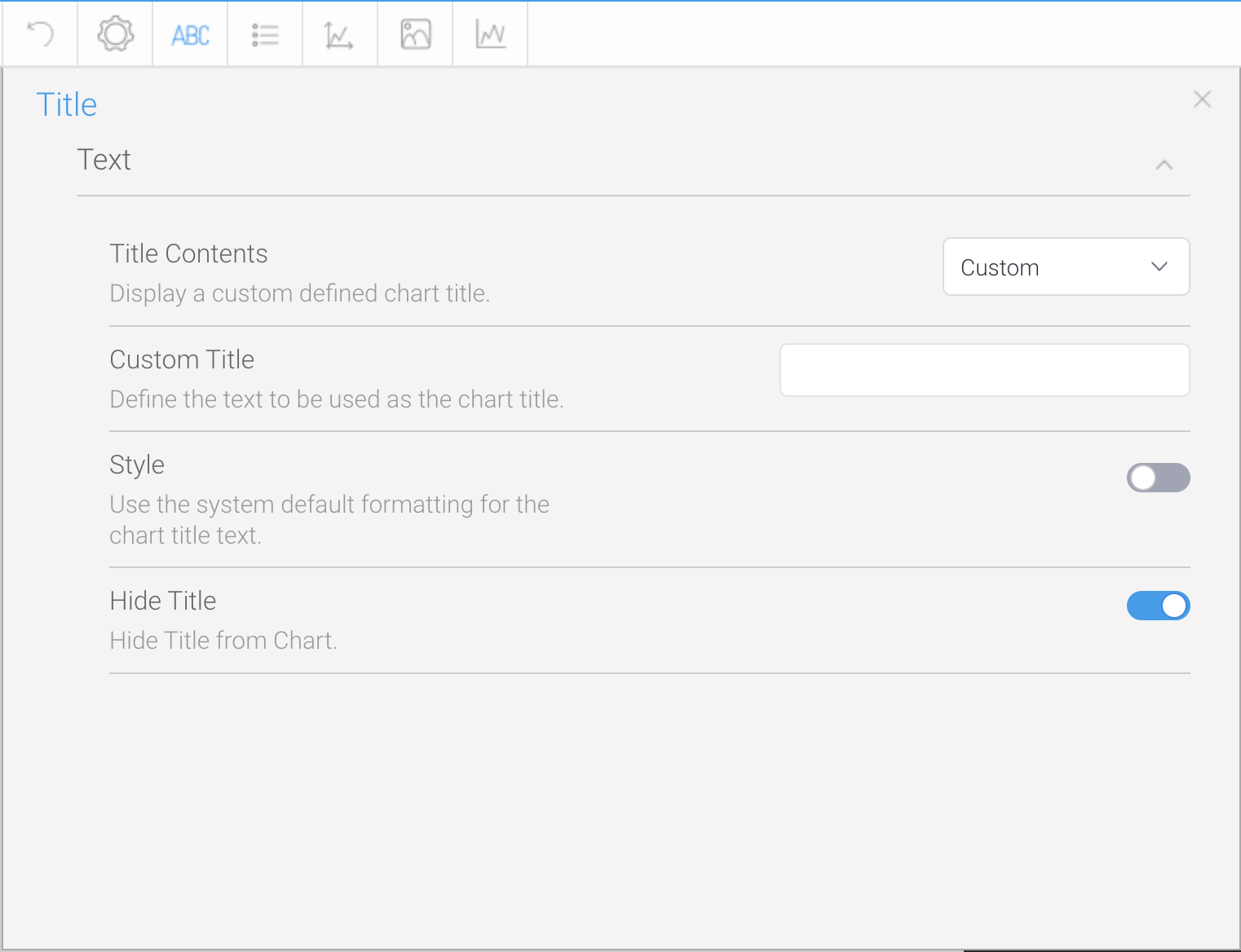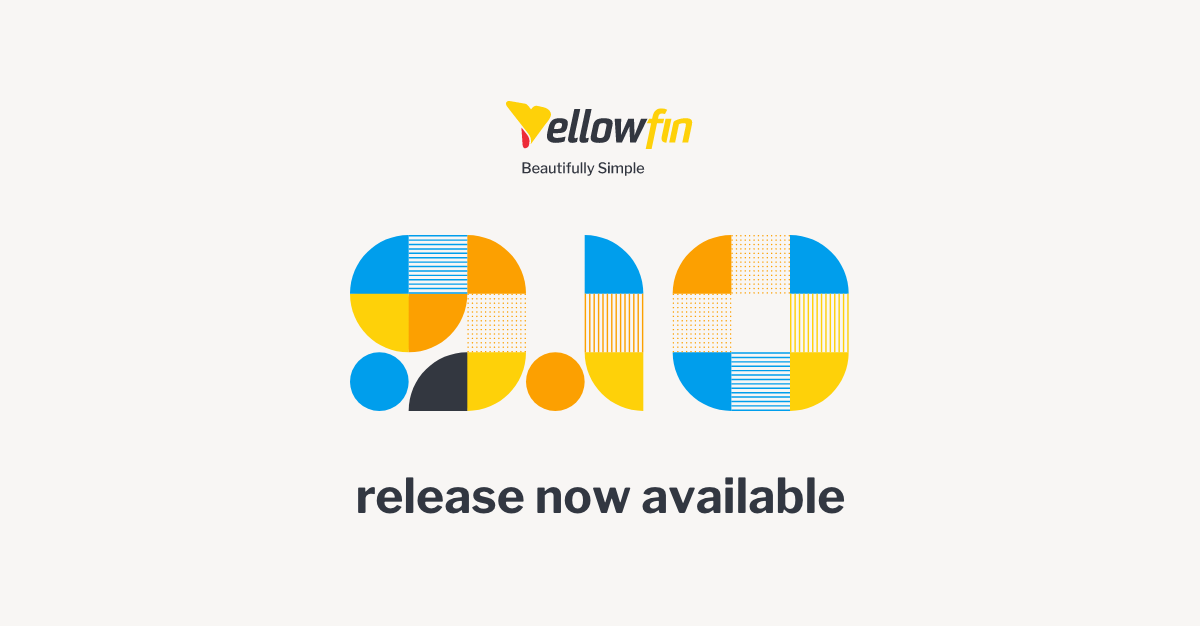
Yellowfin 9.10 Release Highlights
With updates to our browser user interface (UI), Stories, report navigation and more, Yellowfin 9.10 is an update that further enhances your users' analytics experience.
9.10 brings significant updates. Browse Page UI has received a sleek makeover, simplifying navigation for reports, dashboards, and presentations, catering to both new and experienced users.
Other enhancements include Yellowfin Stories now support report drill-through, system admins can set default broadcast formats, web services allow users to add folders to views, report sections export as separate Excel tabs, and more.
In this blog, we cover some of the biggest highlights in the 9.10 release. For the full list of updates, please visit our release notes page.
Browse Page UI Upgrade
The user interface of the Yellowfin Browse Page has been revamped with a cleaner and simpler look. This new design is intended to enhance the browsing experience by providing easy navigation for reports, dashboards, presentations, and more. It is user-friendly and efficient for all users, whether they're new to Yellowfin or seasoned users.
Before:
After:
See it in action:
Ability to set a default Yellowfin Broadcast format
Broadcasting allows you to send a report or dashboard to one or more users via email, based on a defined schedule and set of rules.
System administrators can now set advanced configuration for default broadcast formats, providing flexibility to choose between available formats such as HTML, CSV, DOCX, PDF, LINK, XLSX, and TXT. The end users would be able to send the broadcast in the selected format.
Read More: What is Yellowfin Broadcast? Adding Call-to-Actions to Your BI
Drill through support on Yellowfin Stories
Yellowfin Stories enables users to seamlessly share and discuss business metrics, integrating external context alongside data narratives. This eliminates the necessity for external tools like email or third-party documents. Yellowfin Stories combines visual analysis with text, facilitating in-depth collaborative analysis by incorporating reports, images, videos, and text.
Yellowfin Stories now supports report drill-through, allowing users to click hyperlinks within a report to navigate to related reports, revealing more detailed information.
Web Services function that allows users to add a folder to a view
In Yellowfin, a view acts as a metadata layer, simplifying database complexities for report writers. It specifies which database columns are accessible for report creation, potentially spanning multiple tables and defined joins.
There is a set of web services to update a view in Yellowfin and we just added a new function that allows users to add a field folder to a view.
Option to send users an email with a “link” to the password reset page
With REST Services, Yellowfin offers the ability to send password resets to users via email. Now, you have the option to send an email with a "link" to the password reset page, rather than transmitting the password in clear text.
Minimum memory allocation to the PDF exporter
You can now set the initial and the maximum memory setting to the PDF exporter, ensuring that the PDF export process has sufficient resources to function smoothly.
There is also a default set for the PDF exporter. Setting a minimum memory allocation helps optimize the PDF export process, ensuring it can handle various report sizes and complexities efficiently, resulting in better performance and reliability when generating PDFs in Yellowfin.
This can be set via the web.xml configuration option, which provides configuration and deployment information for the Yellowfin application.
Report sections are now exported to different Excel tabs for tabbed or multi-page section reports
Report content can be exported to a number of file formats for use outside of Yellowfin. These formats include CSV, DOCX, PDF, Text, and XLSX.
With the new enhancement, report sections are exported to separate Excel tabs, particularly beneficial for tabbed or multi-page section reports.
Ability to include a chart title so the correct visualization can be selected when adding a report to a dashboard, presentation or story
Title allows you to identify a chart or visualization, especially when adding that report chart to a dashboard, presentation or story.
This title can now be hidden if it’s not needed in the chart but you still can identify the chart by using the chart name.
More information
The latest releases of Yellowfin can be accessed here.
Release notes for this and every other version of Yellowfin Version 9 can be accessed here.
If you are upgrading from an earlier version of Yellowfin to version 9, be sure to read the Change Management guide which is located here.
For detailed information on how to use Yellowfin, access our Wiki here.
